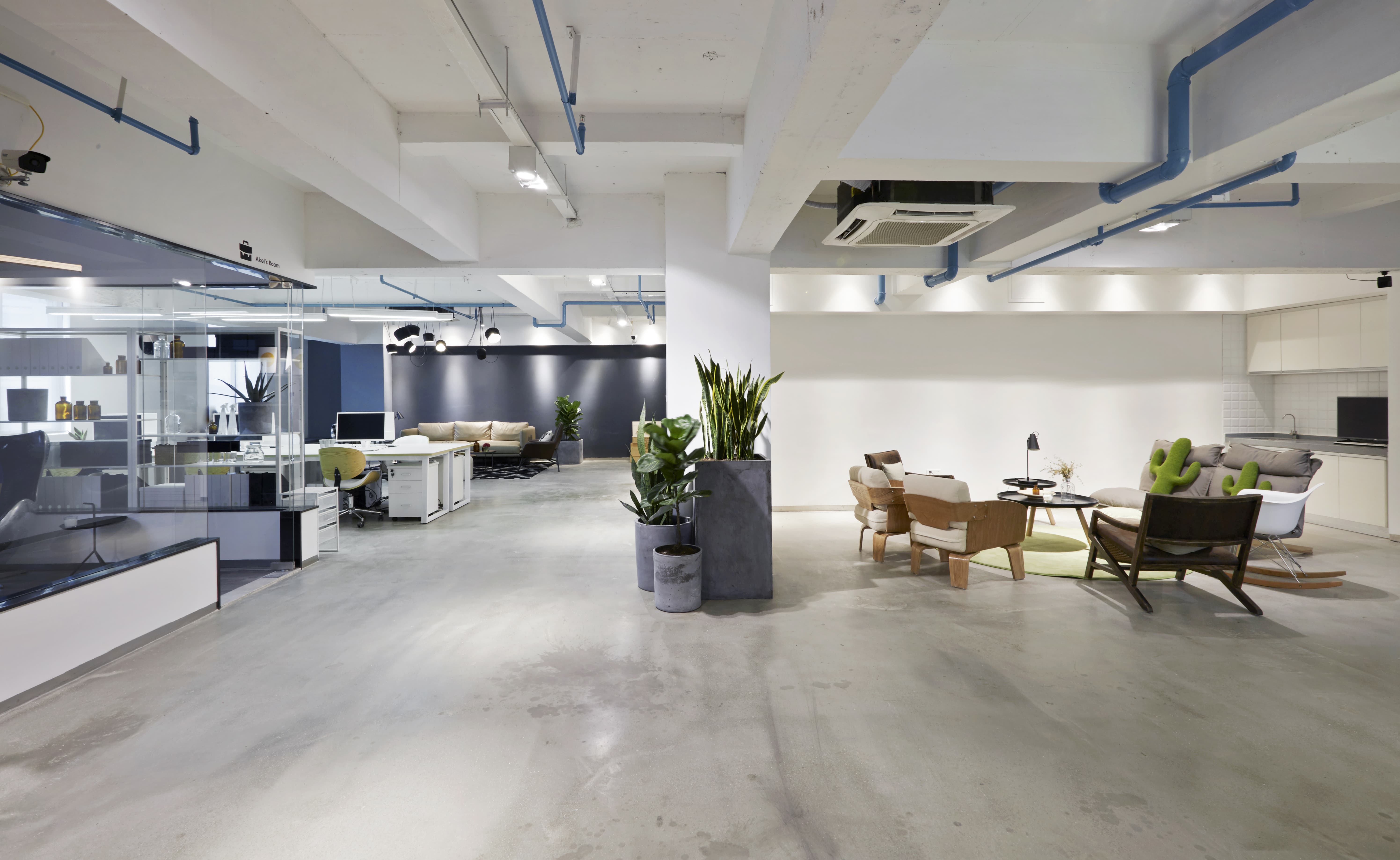In the 1960s, Robert Propst declared that “Today’s office…saps vitality, blocks talent, frustrates accomplishment…We find ourselves now with office forms created for a way of life substantially dead and gone.” And while we hate to lead with such a bleak sentiment, Propst’s words are echoed today by many leaders and innovators looking for a way to rethink their office spaces. It may surprise you, then, to learn that Propst designed the first cubicle. He intended to accommodate dynamic and real-world work styles; however, the popularized cubicle became overused and lost some of its original spirit. While the cubicle certainly can be strategically utilized, obstacles to connection and a lack of thorough privacy abound when they are a thoughtless default in design. As collaboration became more valued in the workplace, some cubicle walls were removed. In these open floor plans, however, a total lack of privacy and unhindered access to colleagues left many workers' needs still unmet.
Office Pods: A Modern and Modular Solution
Shifts in workplace design were already emerging before the COVID-19 pandemic when employees expressed a growing desire to choose where they work. Now, leaders find that offices that inspire rather than require attendance are vital in growing their organizations, retaining top talent, and keeping up with evolving employee needs. A key player in this shift is the office pod.
“The office is an invention. The office is not the place where work has always existed...It’s the evolution of the workplace. Because if the office has been invented, it can be reinvented.”
- Agustin Chevez architect and a workplace design researcher
Office pods are an innovative response to what open office floor plans and office cubicles get wrong. They offer many benefits, including enhanced productivity, creativity, and well-being in the workplace. Generally constructed with see-through yet soundproof walls, pods are closet-sized boxes — complete with ventilation and sound traps — designed to accommodate basic technology for remote work such as laptops. Individual pods focus on the employee conducting a remote call or seeking privacy for uninterrupted deep work. Meeting pods provide space for up to four individuals. Both are intended to be shared rather than owned spaces.
The Benefits of Office Pods
#1 Pods Enhance Privacy and Foster Focus
Past office designs have featured rigidly assigned seating and uniformity that required all work to be done in the same space, in a sea of distractions. The pod-inclusive office empowers employees to decide where their work is best done. This autonomy alone can increase productivity as individuals can create their ideal conditions simply by relocating within the office space. When an employee steps into a pod, they non-verbally announce to the rest of the office that they’re unavailable, giving them room to focus with no disruptions. This instantaneous privacy satisfies all four of the necessary forms of privacy. Those forms of privacy are visual, spatial, informational, and auditory.
#2 Pods Improve Acoustics in Open Spaces and Inside Pods
Brian Chen, co-founder of pod company ROOM, has found the most neglected needs in office floor plans are spaces for small group meetings and one-person phone calls. Since these needs aren’t constant, pods provide the perfect intermittent solution. When Chen created his first pod, he knew soundproof materials were essential. Through the development process, his team evolved their build from plywood and insulation to more sophisticated materials that allow airflow and yet block sound. The benefits go both ways, isolating individuals engaged in conversation and reducing the noise in the surrounding office environment.
#3 Pods Offer Flexibility and Scalability
Phil Kirschner of McKinsey likens offices that incorporate pods to an ‘ecosystem of spaces.’ In this ecosystem, employees can oscillate between engaging in common areas, gaining focused access to colleagues, and tapping into resources, technology, and tools in a convenient flow. This flexibility can be brought into an office of any size with convenient pods. As a company’s needs change, additional pods can be added, and existing pods can be transferred to new spaces. The benefits and flexibility of pods do require an up-front investment, but for projects where budget, spatial, or strategic constraints rule out renovation, they can be an optimal solution.
#4 Pods Contribute to Employee Health and Well-being
Standing desk trends indicate a shift towards unconventional work environments that provide more movement-oriented ergonomics. And Yale medical professionals recommend we get out of our seats every 30 minutes. Allowing employees to move about the office and utilize pods intermittently effortlessly incorporates these healthy movement guideposts into daily office life. Pods also act as intentional and optional “nooks and alcoves,” which Kirschner identifies as having a natural appeal and magnetism. They reduce stress that comes from constant sensory inputs while promoting mental well-being. Additional benefits come from the focused state employees can maintain while using a pod, something flow expert Mihaly Csikszentmihalyi says can bring a sense of purpose and satisfaction to the work being done.
Integrating Office Pods into Existing Office Spaces
By strategically adding pods to existing spaces, businesses can draw employees into otherwise unused spaces and maximize their current layouts without needing renovations. In some offices with several conference rooms and little to no space for one-on-one or virtual work, reconfiguring larger rooms to accommodate pods makes sense. Of course, office pods aren’t without their challenges. Some office buildings face zoning regulations that impact installation, even when a renovation of the existing space isn’t taking place. And they can each run in the $ 10,000-$ 20,000+ range depending on their features, style and how many occupants they accommodate. The potential office pods provide, more often than not, make these minor obstacles worth overcoming. Increasing access to privacy and unhindered focus contributes to an employee-centric environment in a powerful way that employees and business leaders all benefit from in an ever-evolving workplace. Considering office pods in Canada as an upgrade to your space? Meet with a Truspace design consultant for a free assessment today.


.jpg)
.jpg)